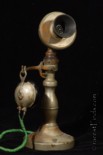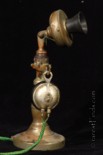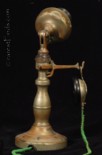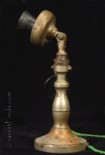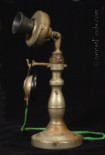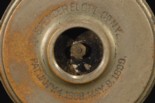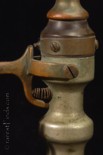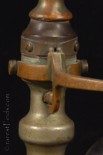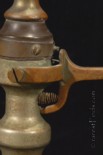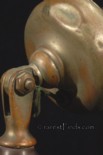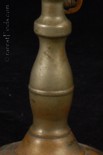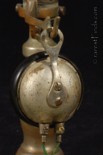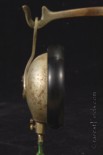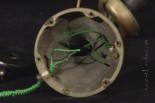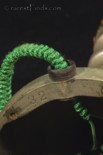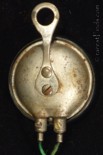Exceedingly rare, most likely the only one extant, Spencer Potbelly Candlestick Telephone with Pocket-Watch Receiver and novel patented Transmitter.
Patents, click on any image to see larger image!

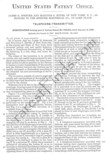
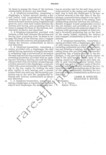

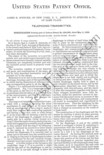
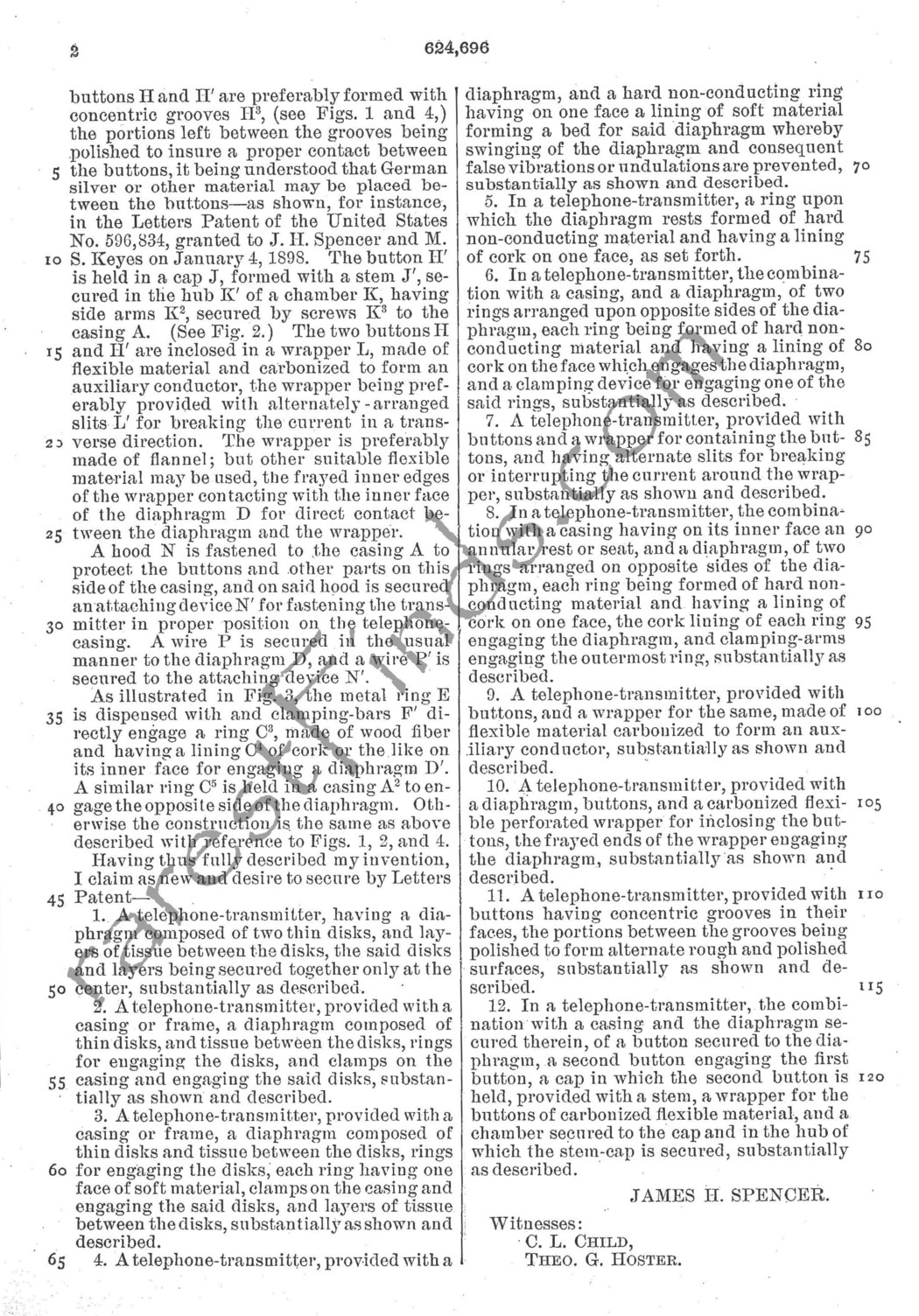

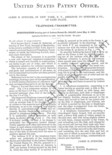
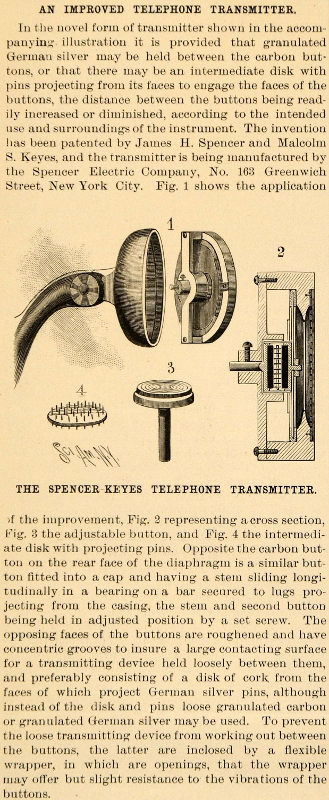 This, most likely only extant example of the Spencer potbelly candlestick telephone, bears the serial number 32, and was manufactured by the Spencer Electrical Co., New York City, N.Y. There are two patent dates stamped into the face of the receiver (see picture # 6). However, there are three patents issued on these two dates; patent #596'834 was issued on January 4, 1898, and the two patents with the consecutive numbers 624'696 and 624'697 both issued on May 9, 1899, to James H. Spencer. All three patents can be viewed below.
This, most likely only extant example of the Spencer potbelly candlestick telephone, bears the serial number 32, and was manufactured by the Spencer Electrical Co., New York City, N.Y. There are two patent dates stamped into the face of the receiver (see picture # 6). However, there are three patents issued on these two dates; patent #596'834 was issued on January 4, 1898, and the two patents with the consecutive numbers 624'696 and 624'697 both issued on May 9, 1899, to James H. Spencer. All three patents can be viewed below.
A description of the novel transmitter, published in the Electrical World and Engineer, a weekly preview of progress in electricity and its practical applications, Volume 34, 1899, page 248, states:
The Spencer Telephone Transmitter.
An improvement in telephone transmitter construction was recently patented by Mr. James Spencer, of New York. The object of the invention is to avoid metallic vibrations, only the intended actual sound being properly transmitted. To accomplish this result Mr. Spencer employs novel means of supporting the diaphragm. In the instrument illustrated, a sectional view of which is seen in Fig.2, two diaphragms are shown. Layers of tissue are placed between the diaphragms to prevent induced vibration, and for the same purpose the diaphragms are securely held in place against rings of wood fiber or other non-conducting material. By this method of construction the metallic sound or ringing which is so common is taken up or deadened by the soft lining materials, thus insuring the proper transmission of sound of the voice, even in very noisy places. The two diaphragms are held securely in the grip of the frame by a metal ring and stout clamps, and vibrate in unison with the sound waves. At the center of the diaphragm is clamped a button which faces a second button carried on the frame of the transmitter. The adjacent faces of these two buttons are preferably formed with concentric grooves (see illustration at lower right hand corner of Fig.2), the portions between the grooves being polished insure a proper contact. Any material may be placed between the buttons. The two buttons are enclosed in a wrapper of flexible material carbonized to form an auxiliary conductor, the wrapper being preferably provided with alternately-arranged slits for breaking the current in a transverse direction.
It is claimed for this transmitter that it will transmit all sound and reproduce it in its natural tone. In the language of the patent specifications, it will reproduce a whisper as accurately as the music of a brass band. The Spencer Electrical Company, of New New York City.
To read the article and see the figures mentioned,
click here!
Condition:
This rare phone is complete, only the cover of the base is missing, see picture # 14 and 15. The receiver housing has a dent, see picture #10. The phone measures 11-1/4 inches high, measured with the receiver in the position as shown in the pictures. One of the screws connecting the wires to the watch-case receiver is replaced with a brass screw. The original one present is a steel screw. The replacement screw has the original course thread which is hard to find in this smal size. Some of the nickelplating is worn off.
History:
I could not find any record about the existence of another telephone like this in any of the publications or books I have access to. The American Telephone Collectors Association, the largest association of telephone collectors with over 1,000 members, is maintaining a list of telephone manufacturing companies. This list did not include the name Spencer Electrical Company prior to the find of this telephone; it will be added by one of its members soon.The only record I could find, other than the one in the Electrical World and Engineer mentioned above is a description printed in the Scientific American Supplement, issue of January 29, 1898, page 52, which is shown on the right, click on image to see larger image for easy reading. If you would like to see the entire page as printed in the Scientific American Supplement click here!
I found information about the Spencer Electrical Co. I found in the book, "Brian Pendelton and his descendents, 1599-1910:
William Augstus Pendleton, was born at Brooklyn, N.Y., 23 November, 1860. He is president of O.[sic] H. Spencer & Co., dealers in electrical supplies at 163 Greenwich Street, New York City, and makes his home at Rahway, N.J.
In the Directory of Directors in the City of New York, 1915-1916, James H. Spencer is listed as President, Manager & Director of Spencer Electrical Co.
Inventory Number 01005;
Price: Sold!
